When the starter’s pistol fires, will you be ready to race?
All that dedicated training should mean you’re in PB shape, but without the correct warm-up, you might not get everything from your conditioned body and superior fitness.
All that dedicated training should mean you’re in PB shape, but without the correct warm-up, you might not get everything from your conditioned body and superior fitness.
Even if you aren’t planning to race anytime soon, a few simple drills can prepare your muscles and prime your body before a track workout, interval session or time trial.
A quick series of pre-run activation drills using a mini band is an effective way to engage your running muscles – the glutes, hips, hamstrings and calves – to ensure you’re firing on all cylinders and reduce your injury risk.
Standing knee drive
HOW TO DO IT:
Stand tall with the band looped around both arches. A) Drive one knee up. Hold for 2 seconds at the top. B) Repeat in an alternating fashion.
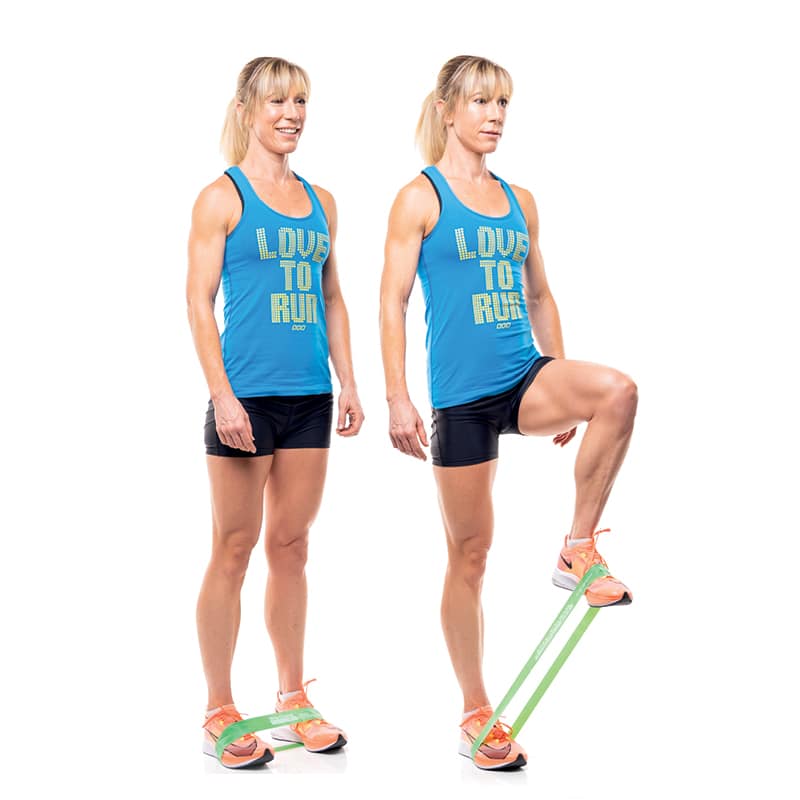
Standing kickback complex
HOW TO DO IT:
Place the band around both ankles. Stand tall and shift your weight onto one leg. A) Keep your free leg straight as you extend it straight back for 10 reps. B) Perform another 10 reps with a diagonal extension (about 45 degrees to the back). C) Repeat with the other leg.
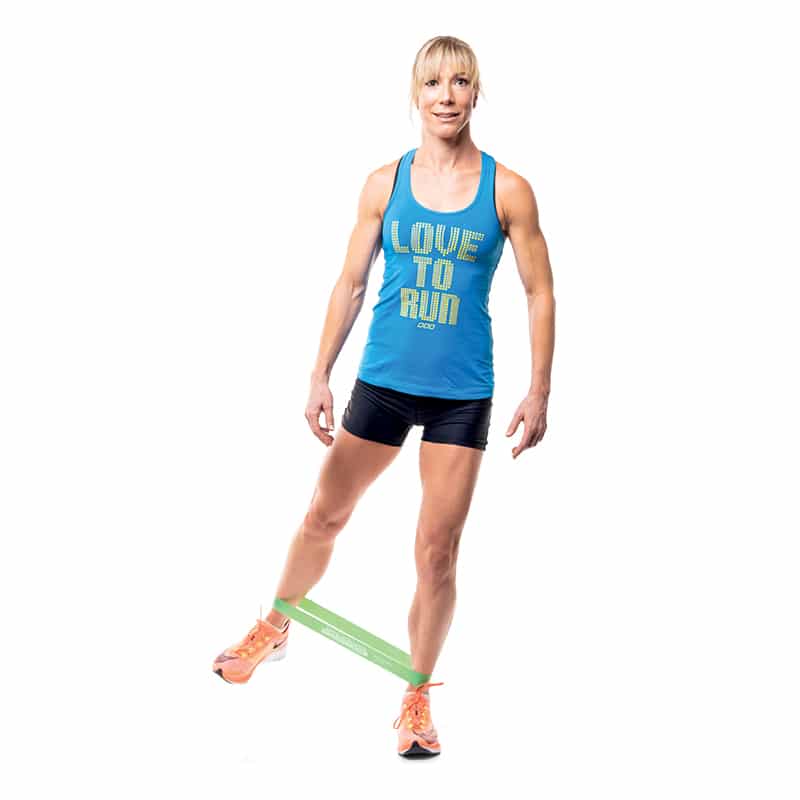
HOW TO STAND TALL:
Stand upright with your head and neck in a neutral position and balanced over your torso. Pull your shoulders back and down. Stack your shoulders over your pelvis, and your pelvis over your feet. Keep your knees and ankles aligned. Engage your core and glutes and leg muscles.
Single-leg Romanian deadlift
HOW TO DO IT:
DO IT: Stand upright with your feet together. Stand on one end of the band with your right foot and hold the band in your left hand. A) Shift your weight onto your right leg and hinge from your hips to extend your left leg out behind you. B) Reach down to the ground with your arms. C) Contract your glutes to return to the starting position, pulling against the band’s resistance as you lift up your torso.
Keep your spine neutral and do not rotate your hips.
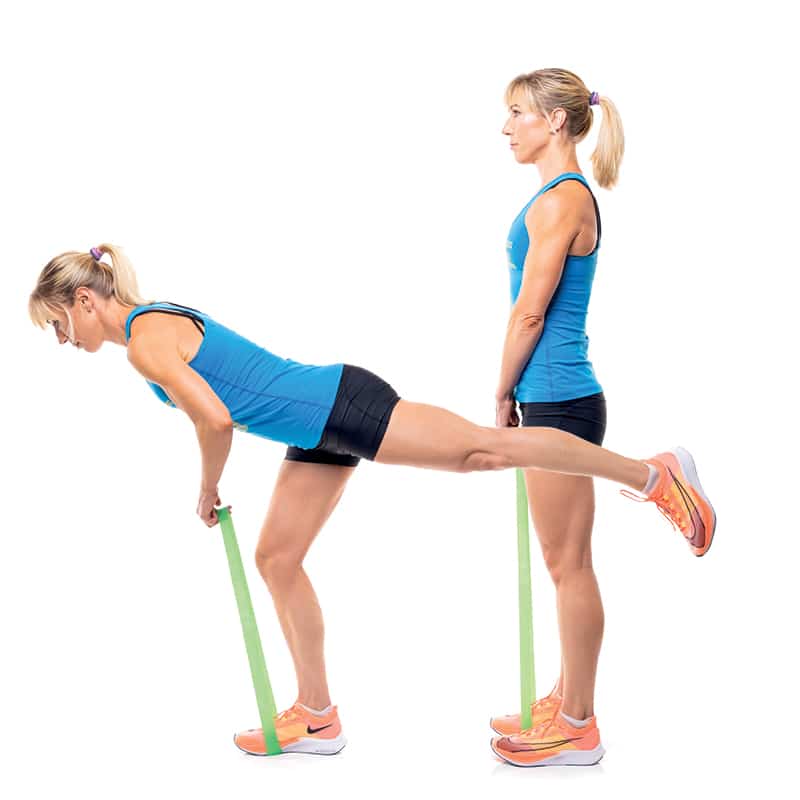
Crab walk
HOW TO DO IT:
Place the band around your ankles. Stand with your feet shoulder-width apart. A) Drop down into a semi-squat position where your knees are bent and your hips are slightly pushed back.
B) Take a step to the side with one leg while remaining in the semi squat position. C) When your leading foot lands, bring the other leg in while maintaining tension on the band. Perform the move on the other side to return back to the starting position.
Look straight ahead, and keep your torso as upright as possible, with your lower back slightly arched.
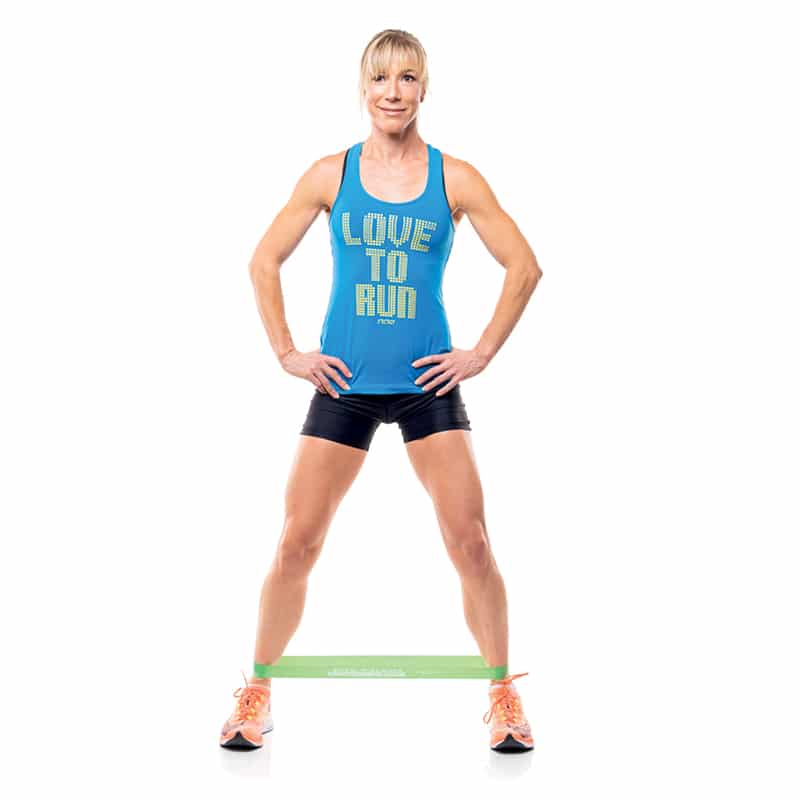
Resisted glute bridge
HOW TO DO IT:
Lie down on a mat with your knees bent at 45 degrees, a band above your knees and your feet flat on the floor close together.
A) Extend your hips off the floor by driving up through your heels. B) Push your knees out and roll onto the outside of your feet. C) Extend your hips as far as possible.
Support your weight with your upper back and the outer aspect of your feet.
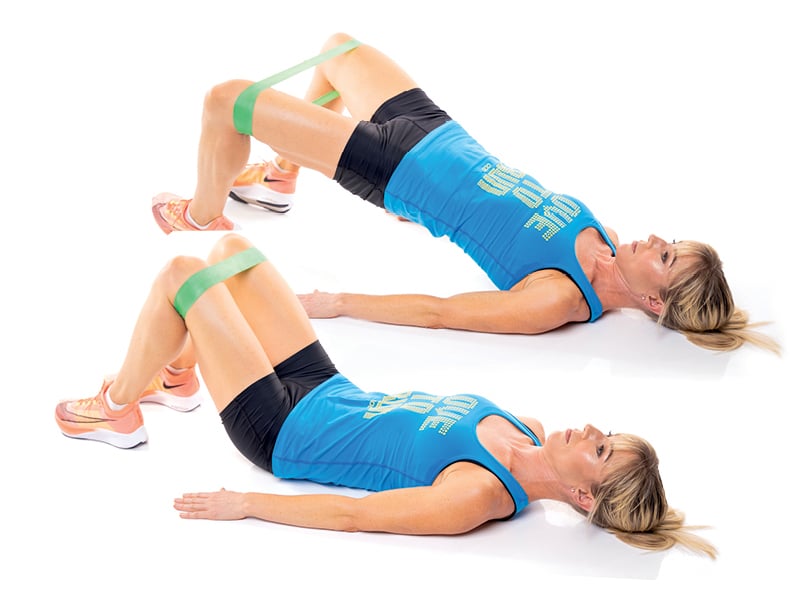
Standing banded half moon drill
HOW TO DO IT:
Stand tall with the band around your ankles. Shift your weight onto one leg. A) Keep your free leg straight as you extend it out to the side and forwards and backwards in an arch (half moon motion). B) Repeat on the other side.
Maintain a slight bend in the knee of your supporting leg.
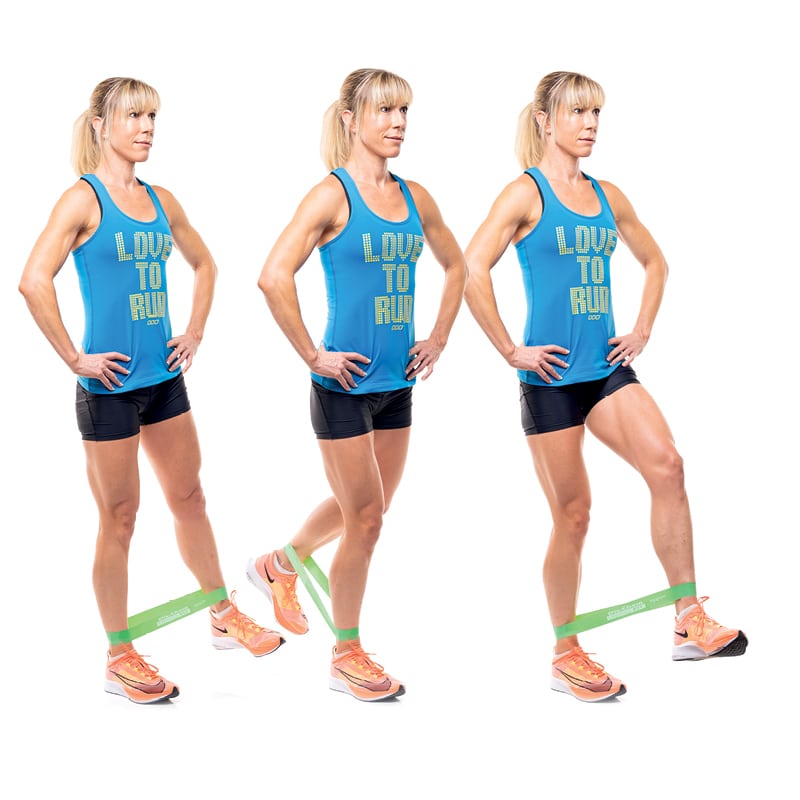
Ankle flexion
HOW TO DO IT:
Sit on the floor. Place the band over your forefoot.
A) Hold the other end to create tension. B) Flex your ankle to engage your calf muscles.
Control your ankle motion by resisting the bandís tension as you release your foot back towards your torso.

And don’t forget about your shoes…
Understand your running style
Choose the right shoe for your running style and biomechanics. Runners generally fall into one of three broad categories, namely: over-pronators, neutral or supinators. This will determine how much support or motion control you need and where it’s located on the shoe. It’s best to get an expert gait analysis at a specialist running store or at a biokineticist or podiatrist to determine your specific biomechanics.
Understand sizing
When it comes to shoe size, it’s important to consider both length and width. Sizing can also vary between brands, so don’t assume your standard shoe size applies to all options.
A good rule of thumb in terms of length is to have a little extra room in your shoe near the toe area. This will provide space for the natural forward movement that occurs while running to reduce issues such as hammer toe. A wide toe box is ideal to accommodate any foot swelling, and gives your foot room to splay in the manner it was naturally designed to. Selecting the right size can also help to prevent blisters.



